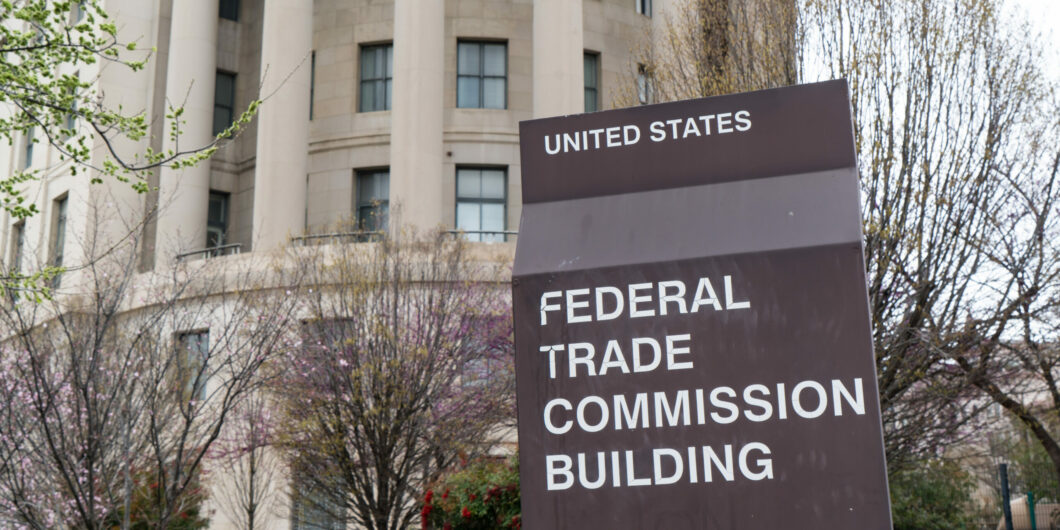The SEC's potential climate-risk disclosure requirement would be redundant, unhelpful, and may be outside its authority.
The Consumer as the Touchstone of Antitrust
After decades as the touchstone of antitrust, the consumer welfare standard is under assault. President Biden’s antitrust appointees are often referred to as neo-Brandeisians (after the Supreme Court Justice who once wrote an article titled “A Curse of Bigness”) because they favor abandoning consumer welfare to return to an earlier era’s “big is bad” approach. And an increasing number of voices on the right—eager to regulate Big Tech—have also soured to “bigness.”
But as former FTC Chairman Timothy J. Muris has recently noted in a very thorough article, those “anti-bigness” standards “were abandoned for good reason: they harmed consumers.” As Muris describes it, a major part of that shift is a return to “1960s-style merger enforcement,” which “the courts rejected” since, and “antitrust agencies subsequently abandoned.” Unfortunately, the rulings that then came down under Section 7 of the Clayton Act—whose standard was whether the effect of a merger “may be substantially to lessen competition, or to tend to create a monopoly,” were “incoherent, illogical, and, most importantly, anti-consumer.”
The first illustration of that trend was the 1962 Brown Shoe–Kinney merger case. The court declared that “It is competition, not competitors, which the Act protects,” but then proceeded to rule in the opposite direction. They “protected” (at least, if protection is a synonym for handicapping) competition by trying to keep inefficient producers from being out-competed for customers’ business.
That protection was supposedly justified despite the two companies combining for only 4.5% of shoe manufacturing and 2.3% of shoe store sales. In addition, the market shares of the largest firms were going down, and there were 970 domestic shoe manufacturers in 1954. Further, the economies from merging would have allowed a significant decrease in their retail shoe prices. Those efficiencies would make it harder for less efficient producers to keep up, so the merger was rejected in the name of competition, despite the lost benefits for consumers.
Another good illustration of the illogic involved was the 1960 Vons attempted acquisition of Shopping Bag in Los Angeles. Despite the existence of thousands of competing stores and dozens of chains in the Los Angeles grocery market, the government rejected a merger between two chains which would have created a combined Los Angeles market share of 7.5%. Given that the chains served different sections of the city, it seems an exaggeration to claim this merger would reduce competition in the city.
There were far too many markets and chains for anything like effective collusion or restriction of competition. Entry into the booming Los Angeles market was easy. But the Supreme Court said “no,” relying primarily on a fall in the number of single stores from 5,365 in 1950 to “only” 3,590 in 1953, at a time when the cost efficiency of chains was increasing. The more efficient chains competing against one another provided more competition benefitting consumers, despite the fall in single-store numbers.
That made any “lessening of competition” a mirage, but the court believed the mirage. And that led Justice Potter Stewart to write of the lack of logic in a famous dissent, “The sole consistency that I can find is that, in litigation under Section 7, ‘the Government always wins.’”
Now, current FTC Chair Lina Khan wants to go back to such “controlling precedents” for merger cases, overturning what has since become the widely accepted consumer welfare standard. After all, “the Government always wins,” even when it is not clearly tethered to solid logic or understanding of the consequences of policies, seems very close to this new governing philosophy.
References going back to such old cases (and others as well) may seem too distant from current policies and implementation strategies to pay attention to. However, those cases undermined competition to the point where merger defenders turned themselves inside out to avoid claiming that there would be efficiencies created, because that would provide the excuse for the government to reject the merger, even when those efficiencies would benefit the consumer.
Abandoning the consumer welfare standard is a real threat to Americans. What Americans share most in common with one another is their role as consumers, so that our federal government cannot advance the General Welfare, as the Preamble to the Constitution asserts, if it harms markets.
The government’s desire to demonstrate monopoly power to justify the rejection of a merger led to a cottage industry of sorts, finding ways to distort measures…to find monopoly power where there was no power to hurt consumers.
The Clayton Act
The key phrase in Clayton Act, Section 7—“may be substantially to lessen competition, or to tend to create a monopoly”—also helps us see why its language can be twisted to other ends than advancing competition. The language is unbelievably vague. What is meant by competition? Is it consistent with the perfect competition model in economics? Is it the presence of rivalry (which is inconsistent with the perfect competition model)? Is it a large number of small sellers that will persist in the marketplace (and how small is small and how many is a “large” enough number)?
The courts often decided that harm to small competitors who were outcompeted for consumer favor substantially lessened competition. This idea was loosely derived from the criterion of the large numbers, even though it undermined the competitive process by which consumers gained.
Competition is not the only word that can be turned into putty in the Court’s hands either. Monopoly is defined as a sole seller of a product with no close substitutes and protected by barriers to entry by competitors. Were Brown Shoe and Kinney to merge, as with many other subsequent mergers, it would have been a slight increase in the concentration of shoe production and sales, but that is not a monopoly. A tendency toward more concentration is not a tendency to a monopoly when there are cost savings from that additional scale. But the Court often saw it otherwise, even when that supposedly monopolistic tendency left hundreds or even thousands of competitors in a market.
In addition, the government’s desire to demonstrate monopoly power to justify the rejection of a merger led to a cottage industry of sorts, finding ways to distort measures of concentration and contort the definition of the relevant products and markets to find monopoly power where there was no power to hurt consumers.
For example, M. A. Adelman, investigating an FTC study that supposedly demonstrated an increase in the industrial concentration found that the measure the FTC used “is the best measure of concentration if and only if one wishes to maximize the probable error of the estimate.” The FTC later admitted that the study was wrong. In the Alcoa-Rome Cable merger case, Timothy Muris characterized what the Supreme Court did in overturning the trial court’s decision that there was no threat to competition as “a two-step charade on market definition to find sufficient market shares for a violation.” In the Continental Can case, Justice Harlan, in dissent, described the majority’s market definition approach as to “invent a line of commerce the existence of which no one, not even the Government, has imagined … which sprang into existence only when the merger took place, and will cease to exist when the merger is undone.”
In other words, the government agency and court focus was on “producing” the appearance of monopoly power through mis-defining markets and market shares, allowing them to prevent mergers, when no such monopoly power or tendency to monopoly that would reduce competition really existed.
Still further, we must ask, how much is “substantially” and what determines it? How likely does “may” have to be? How much of an increase in concentration counts as a “tendency” to monopoly?
The problem, then, is that Clayton Section 7’s incredible vagueness leaves its meaning to the eyes of the beholder regulators and courts, who can twist it into any conclusion desired. The last few decades have helped tame earlier misunderstandings of these issues, reflected in the now-general acceptance of the consumer welfare standard as appropriate. But some want to go back to a world where government always gets its way, regardless of whether it makes logical and empirical sense. That is an ominous prospect that should be opposed, following the sage adage: “Fool me once, shame on you; fool me twice, shame on me.”



